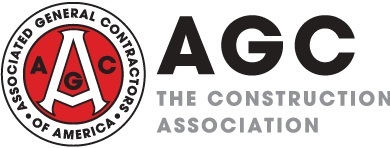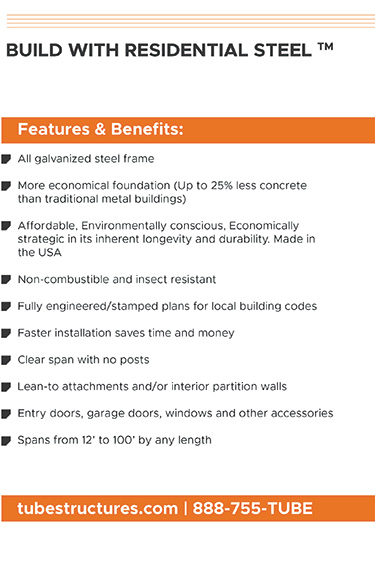Employment increases in January, AGC analyzes
- September 24, 2020
- Posted by: Alan Hageman
- Category: News

Non-farm payroll employment in January increased by 225,000, seasonally adjusted, from December and by 2,052,000 (1.4%) year-over-year from January 2019, the U.S. Bureau of Labor Statistics (BLS) reported, and Associated General Contractors of America (AGC) analyzed in its newsletter Feb. 10. The unemployment rate ticked up to 3.6% from December’s level of 3.5%. Construction employment in January totaled 7,594,000, an increase of 44,000 for the month and 142,000 (1.9%) over 12 months. The monthly increase was the largest in a year but may have been aided by unseasonably mild January weather in the much of the nation. The total was the highest since August 2007. Average hourly earnings in construction rose 2.9% year-over-year to $31.11, 9.7% above the average for all private-sector employees ($28.44, a 3.1% year-over-year increase). The unemployment rate in construction, not seasonally adjusted, declined from 6.4% in January 2019 to 5.4%, and the number of unemployed jobseekers with construction experience fell from 638,000 to 515,000—the lowest January levels in the 21-year history of both series. Not-seasonally-adjusted levels vary with normal weather and holiday patterns and thus may not accurately show month-to-month economic trends.
Construction spending totaled $1.328 trillion at a seasonally adjusted annual rate in December, a dip of 0.2% from the upwardly revised November rate but an increase of 5% year-over-year from December 2018, the U.S. Census Bureau reported on February 3. Private residential spending increased 1.4% for the month and 5.5% year-over-year. New single-family construction climbed for the sixth consecutive month, by 2.7% from November to December and gained 5.2% year-over-year. New multifamily construction sank 1.8% for the month and 7.1% year-over-year. Residential improvements rose 0.5% for the month and 11% year-over-year. Private nonresidential spending declined 1.8% from November and 0.1% year-over-year. Of the four largest components, power gained 5.6% year-over-year (comprising electric power, up 4.5%, and oil and gas pipelines and field structures, up 9.6%); commercial, -4% (comprising retail, -13%, and warehouse, 5.3%); manufacturing, 5.8%; and office, 4.1%. Public construction slipped 0.4% for the month but jumped 12% year-over-year, with double-digit year-over-year gains in most segments. The three largest public segments all had year-over-year increases: highway and street construction, 14%; education construction, 4.1%; and transportation (air, transit, rail and port) construction, 13%. Total spending in 2019 was 0.3% lower than in 2018. Private residential spending declined 4.7% for the year, private nonresidential spending was flat, and public construction spending increased 7.1%.
Construction employment, not seasonally adjusted, increased between December 2018 and December 2019 in 211 (59%) of the 358 metro areas (including divisions of larger metros) for which BLS provides construction employment data, fell in 73 (20%) and was unchanged in 74, according to an analysis by AGC. (BLS combines mining and logging with construction in most metros to avoid disclosing data about industries with few employers.) The largest gain again occurred in the Dallas-Plano-Irving division (16,700 combined jobs, 11%), followed by the Los Angeles-Long Beach-Glendale division (12,300 construction jobs, 8%); Las Vegas-Henderson-Paradise (9,400 construction jobs, 14%) and Houston-The Woodlands-Sugar Land, Texas (9,300 construction jobs, 4%). The largest percentage increase occurred in Kansas City, Mo. (17%, 4,800 combined jobs), followed by Omaha-Council Bluffs, Neb.-Iowa (16%, 4,500 combined jobs); Rochester, N.Y. (15% 3,000 combined jobs); Auburn-Opelika, Ala. (15%, 400 combined jobs) and Las Vegas-Henderson-Paradise. The largest job loss again occurred in New York City (-4,500 combined jobs, -3%), followed by Northern Virginia (-2,900 combined jobs, -4%) and Riverside-San Bernardino-Ontario, Calif. (-2,600 construction jobs, -3%). The largest percentage loss occurred in Fairbanks, Alaska (-12%, -1,300 construction jobs), followed by Longview, Texas (-10%, -1,400 combined jobs) and Wichita Falls, Texas (-10%, -300 combined jobs). Construction employment reached a record high for December in 71 metros (dating back in most areas to 1990) and a record December low in four areas.


